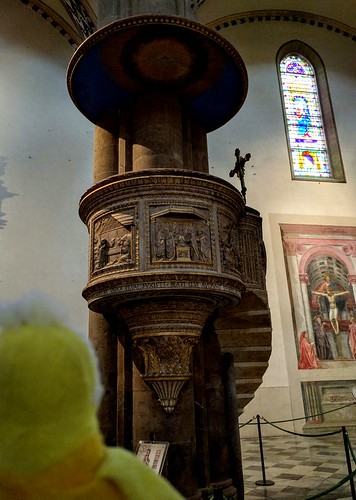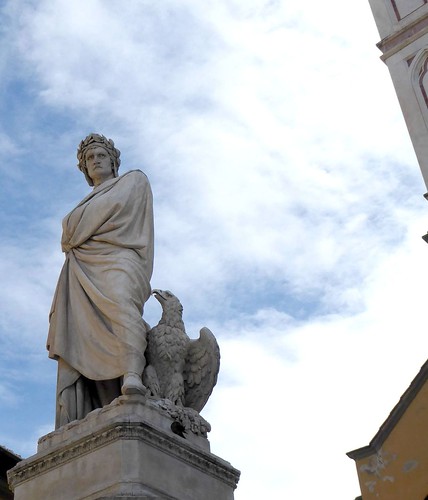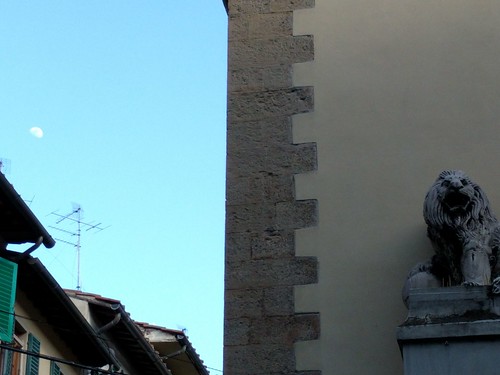 |
| Florence, Italy |
Lee describes the historic center of Florence, birthplace of the Renaissance, as a world suspended in amber. It's a perfect description. In 14th century Florence, the merger of Church and secular wealth, power, ruthlessness and creative energy became a flash point transforming western civilization. The Florence of today is the standing record of that fusion suspended in time for all to see.
 |
| Reliquary belonging to House of Medici Florence, Italy |
We stayed in Florence for two weeks, exploring treasures from both the Renaissance and Medieval periods. The city is full of world famous paintings, sculpture and architecture by men such as Brunelleschi, the oldest of the the founding fathers of the Renaissance, Leonardo da Vinci, Raphael, Donatello, Titian, Michelangelo, Botticelli and others. Lisa del Giocondo, the woman Michelangelo painted as the Mona Lisa, lived and is buried in Florence.
 |
| Galileo was first denounced from this pulpit, an event which culminated in him being tried for heresy during the Inquisition. Florence |
Galileo and Michelangelo are also buried there. Dante, however, is not buried there. In 1302 he found himself on the wrong side of a political conflict involving the Pope and in 1315, refusing to pay the fine, was condemned to permanent exile from his beloved Florence or be burned at the stake. In 2008 the city council of Florence passed a motion rescinding his death sentence but thus far the city of Ravenna refuses to give back his bones.
 |
| Dante and eagle outside the Duomo Florence |
Otherwise, Florence claims many honors. According to wikitravel, Florentines reinvented money, the gold florin which became the engine that drove Europe out of the "Dark Ages". Florentine bankers also financed the first route around Africa to India and the Far East. The Americas were named after a Florentine, Amerigo Vespucci. Florentines also pioneered the use of the vernacular, thus ending the use of Latin as the common language. They invented opera and Ferdinando de' Medici made possible the invention of the piano through his patronage of Bartolomeo Cristofori, a harpsichord builder from Padua.
 |
| When Michelangelo was an apprentice a rival punched him in the nose "mashing it like a biscuit". It remained that way the rest of his life. Bargello Museum - Florence Italy |
As for me, the unfinished sculptures Michelangelo were especially powerful, his abandoned figures half-released from the stone. Initially I assumed the unfinished pieces, the rough work, were done by assistants but, when I mentioned this to Lee, he said Michelangelo did most of the work himself, frequently working through the night and, when he did rest, often slept in his boots and clothes. That impressed me and so I read up on him. His biographer Paolo Giovio wrote that "Michelangelo's nature was so rough and uncouth that his domestic habits were incredibly squalid, and deprived posterity of any pupils who might have followed him." Various biographers describe him as solitary and melancholy although he did love one man, Tommaso dei Cavalieri
 |
| — Festina lente — (make haste slowly) Motto adopted by the House of Medici. Florence morning |

No comments:
Post a Comment